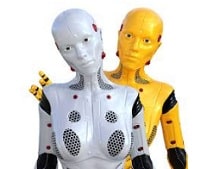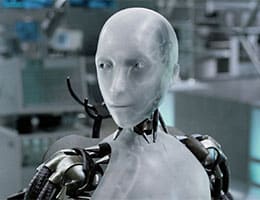 The adjective humanoid is used to describe that which has the characteristics or appearance of a human being . The concept is linked to anthropomorphism , which consists of attributing human traits to an object or an animal.
The adjective humanoid is used to describe that which has the characteristics or appearance of a human being . The concept is linked to anthropomorphism , which consists of attributing human traits to an object or an animal.
Anthropomorphism obeys a tendency in the psychology of our species. Homo sapiens tends to personify other species or real or abstract things, giving them human properties. In this way, a robot or a mythological creature can be considered humanoid.
Androids are a clear example of humanoid beings: they are anthropomorphic robots that, in addition to having a human appearance, emulate issues typical of human behavior autonomously. The first androids were imagined in the realm of fiction, although over time scientists developed the technologies necessary to create real humanoids. Currently, this topic is of great interest to technophiles, although we are still far from being able to buy an android capable of chatting and living with us as if it were just another person.
One of the most popular humanoids of this class is ASIMO , a robot developed by Honda . The Japanese company presented this android in 2000 and surprised with its autonomy and movements.
Faced with these creations from the fields of robotics and artificial intelligence, there are various positions that respond to the degree of interest but also to moral issues. Broadly speaking, we can distinguish: those who anxiously await the emergence of androids that interact with us as another human being would; those who don't find this idea particularly attractive; those who strongly oppose it. It is not necessary to explain the reasons that drive the first two groups to feel enthusiastic or indifferent, since it is probably a matter of personal tastes, but the latter has its roots in other issues, such as religion.
 A humanoid-looking robot may seem like a technological achievement to many, but also an attack on nature and an attempt to "play God" to others. Science and religion have never gone hand in hand, and in fact they tend to oppose each other in almost all areas where they intersect. While the former cannot quench their thirst to manipulate their own existence, the latter consider that such power should only be in the hands of a divinity.
A humanoid-looking robot may seem like a technological achievement to many, but also an attack on nature and an attempt to "play God" to others. Science and religion have never gone hand in hand, and in fact they tend to oppose each other in almost all areas where they intersect. While the former cannot quench their thirst to manipulate their own existence, the latter consider that such power should only be in the hands of a divinity.
The idea of humanoid also appears when talking about extraterrestrials . It is understood that an extraterrestrial is a living being that was not born on planet Earth : so far, science has not been able to prove that these beings exist, and for this reason extraterrestrials belong to the realm of fiction or speculation.
When imagining what aliens would be like, they are often described as humanoid. Categories such as the grays , the little green men , the giants and the Nordics allude to extraterrestrials that would have two legs, two arms, a head and two eyes, just like humans .
Far from being a virtue, this tendency to imagine beings from other planets with physical and cultural characteristics similar to ours is nothing more than a limitation very typical of human beings. This is related to our difficulty in understanding nothingness, infinity and the origin of the universe . How can we contemplate the possibility of living without the five senses that we believe are essential, or with others that no species on our planet possesses? How to devise a culture that does not need to feed, or breathe, or that does not live in society? These possibilities take us beyond our imagination, and that is why the need arises to attribute humanoid traits to imaginary beings.
